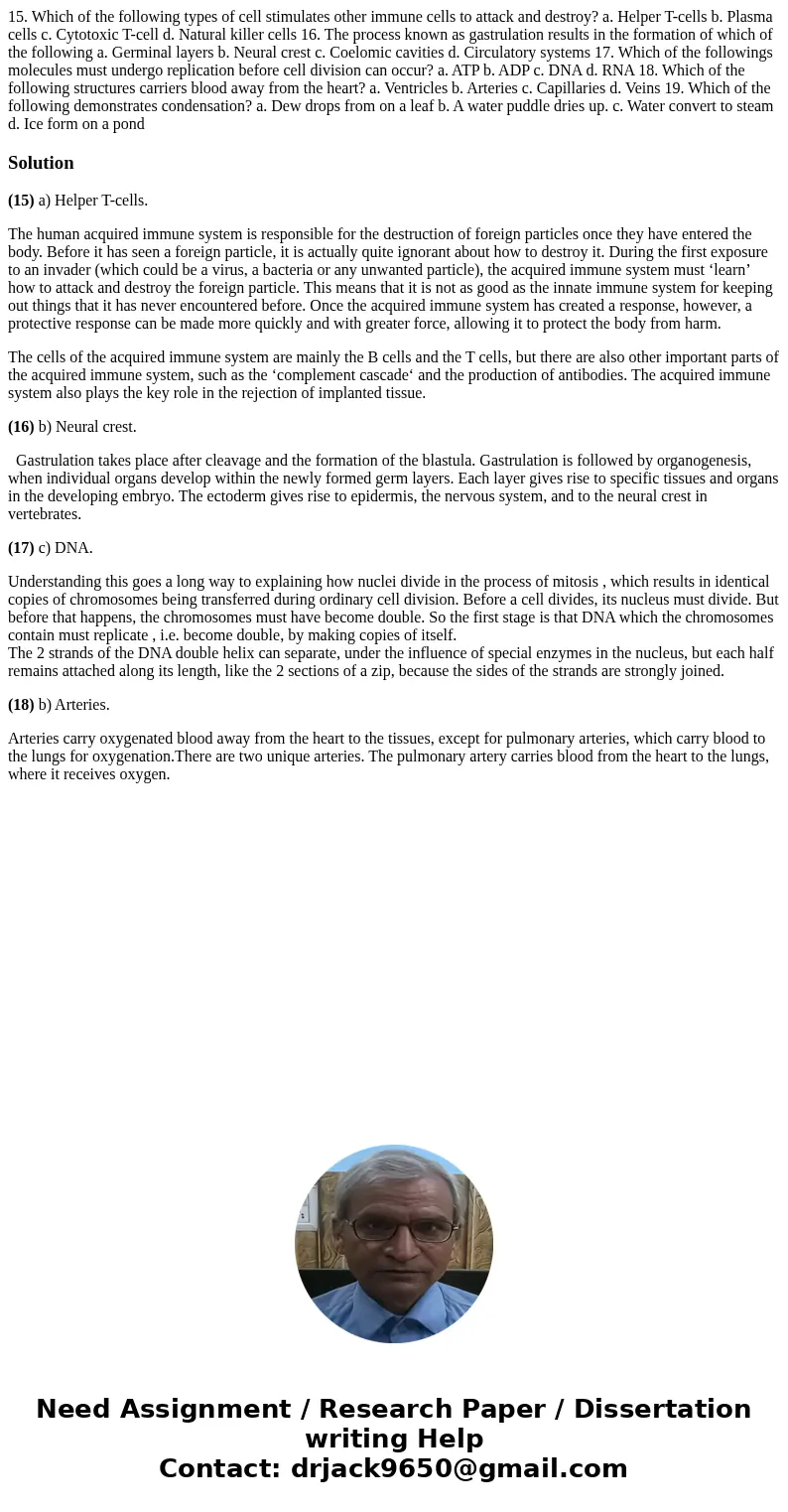15 Which of the following types of cell stimulates other imm
15. Which of the following types of cell stimulates other immune cells to attack and destroy? a. Helper T-cells b. Plasma cells c. Cytotoxic T-cell d. Natural killer cells 16. The process known as gastrulation results in the formation of which of the following a. Germinal layers b. Neural crest c. Coelomic cavities d. Circulatory systems 17. Which of the followings molecules must undergo replication before cell division can occur? a. ATP b. ADP c. DNA d. RNA 18. Which of the following structures carriers blood away from the heart? a. Ventricles b. Arteries c. Capillaries d. Veins 19. Which of the following demonstrates condensation? a. Dew drops from on a leaf b. A water puddle dries up. c. Water convert to steam d. Ice form on a pond
Solution
(15) a) Helper T-cells.
The human acquired immune system is responsible for the destruction of foreign particles once they have entered the body. Before it has seen a foreign particle, it is actually quite ignorant about how to destroy it. During the first exposure to an invader (which could be a virus, a bacteria or any unwanted particle), the acquired immune system must ‘learn’ how to attack and destroy the foreign particle. This means that it is not as good as the innate immune system for keeping out things that it has never encountered before. Once the acquired immune system has created a response, however, a protective response can be made more quickly and with greater force, allowing it to protect the body from harm.
The cells of the acquired immune system are mainly the B cells and the T cells, but there are also other important parts of the acquired immune system, such as the ‘complement cascade‘ and the production of antibodies. The acquired immune system also plays the key role in the rejection of implanted tissue.
(16) b) Neural crest.
Gastrulation takes place after cleavage and the formation of the blastula. Gastrulation is followed by organogenesis, when individual organs develop within the newly formed germ layers. Each layer gives rise to specific tissues and organs in the developing embryo. The ectoderm gives rise to epidermis, the nervous system, and to the neural crest in vertebrates.
(17) c) DNA.
Understanding this goes a long way to explaining how nuclei divide in the process of mitosis , which results in identical copies of chromosomes being transferred during ordinary cell division. Before a cell divides, its nucleus must divide. But before that happens, the chromosomes must have become double. So the first stage is that DNA which the chromosomes contain must replicate , i.e. become double, by making copies of itself.
The 2 strands of the DNA double helix can separate, under the influence of special enzymes in the nucleus, but each half remains attached along its length, like the 2 sections of a zip, because the sides of the strands are strongly joined.
(18) b) Arteries.
Arteries carry oxygenated blood away from the heart to the tissues, except for pulmonary arteries, which carry blood to the lungs for oxygenation.There are two unique arteries. The pulmonary artery carries blood from the heart to the lungs, where it receives oxygen.

 Homework Sourse
Homework Sourse